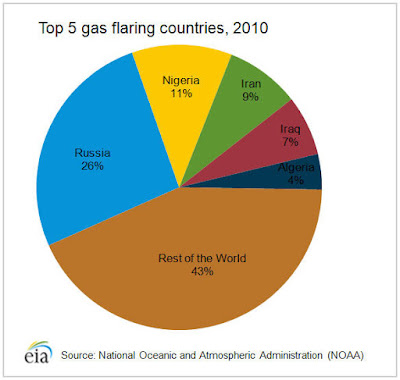The advanced
recycling technologies are required to be introduced in the waste management industry
in the United Kingdom, in which the end-of-life plastic can be recycled for
further process. It will help in the implementation of the low cost process
that can also ensure resource efficiency. It has been implied that only 10% of
the plastic is being recycled at the global level, and currently, 500 billion
tons of plastic is being used at the consumer level, which will be doubled
during the period of next 20 years. In this instance, the cost of exporting
plastic waste to the countries where environmental regulation are low, such as
Asian counties, cannot provide long-term effective solutions (Guo et al., 2010).
Reusing one
pound of the most well-known plastic utilized as a part of water bottles called
polyethylene terephthalate (PET) can preserve around 12,000 units recycles as
per the Environmental Protection Agency, the procedure of recycle needs less
vitality by two-third than regular assembling(Siddique et al., 2008).
Considering
the high environmental impact of plastic waste management, China has banned the
import of plastic waste from the United Kingdom, which has caused a significant
concern for the waste management of plastic. It has also resulted in the
development of business opportunities, in which innovative solutions can be
proposed to support the mechanism of plastic waste management. Moreover, the
implementation of sustainable recycling mechanism in the United Kingdom is
required, which ensures that the incarceration of plastic takes place in a
covered environment. It can help in ensuring that plastic waste is not piled up
in the open-air, which will result in reducing the prevalence of toxicity from
the air (Ismail and Al-Hashmi, 2008). It can result in reducing the prevalence
of toxicity from the soil, which can also help in safeguarding the water
resources from the plastic waste. In this instance, Plaxx model can be
implemented in the United Kingdom as a means to incorporate the sustainable
machinery in plastic recycling. Moreover, with the utilization of Plaxx, the
end-of-life plastic can be transformed into the valuable sulphur hydrocarbon (Hopewell
et al., 2009).
It is also
proposed that the plastic bottles and wraps can be sterilized rather than
recycled, and can be used again for the similar process. In this instance, the
food and beverage industry should take responsibility regarding the collection
of empty bottles, and engage in the sterilization mechanism. It can help in
reducing the production and waste of plastic bottles, which can help in
reducing the prevalence waste. Moreover, the overall sustainability solution
that accounts for the collection of empty bottles can be comprehended with the
effective means of community awareness and contribution (Jambeck et al., 2015).
It eventually
provides business opportunity for the investors in the United Kingdom regarding
the sterilization of plastic bottles and incorporating end-of-life plastic
recycling. Thus, the development of sustainable solution account of the
effective integration of technological solutions, organizational support and
community involvement can help in the effective waste management mechanism in
the United Kingdom (Kaimal and Vijayabalan, 2016).
The recycling
of plastic is considered as a significant area of research due to the increased
need of plastic waste management at the global level. The utilization of
mechanical recycling is considered as an effective and sustainable process, in
which the plastic can be softened by heating and can be transformed into the
modeling granules that are used for the further development of plastic products
(Lazarevic et al., 2010).
Moreover, the
plastic waste that cannot be further developed can be incarcerated and can act
as an alternative source of energy due to the high combustion and energy
produced. It can help in addressing the global energy crisis and can be used as
an effective resource to provide energy to the households and industries. In
this manner, it is also essential that the incarceration of end-of-life plastic
is conducted in the close combustion area so that the contact of toxins with
the environment is reduced. Similarly, automation is required in this process
to ensure that the effect of this process on the wellbeing of the labors and
society is reduced (Nakatani et al., 2017).
Recycled
plastic can diminish the measure of contaminations in air and water. Furthermore
huge numbers of landfill tasks will consume the plastic containers to keep
waste that can be discharged harmful toxins and different materials that
aggravations into the environment. The plastic tar is valuable to deliver water
bottles. Other than it contain perilous chemicals (Bai and Sutanto, 2002). Numerous
researchers and governments are cooperating to discover approaches to quit
utilizing plastic. In 2002, Ireland forced assessments for utilizing plastic
sacks around 0.15 EUR per pack that diminished the use of plastic packs by 90
percent .other than , they pick up 1 million dollar as an income (Guo et al.,
2010). Another way accounts for the reutilization of water bottles which made
of recycled materials that can keep going for quite a while and be recycled by
and by likewise we can utilize glass bottles rather than plastic containers
which is reusable.
Conclusion
The extent of
plastic use is ever increasing due to its high demand on consumer products and
industrial end production. It is difficult to replace plastic with any other
compound due to the nature of the hydrocarbons within the plastic, which are
difficult to replicate using plant matter. Therefore, plastics remain a
non-renewable resource. The inadequate management of plastic has caused
toxicity in the air, soil and water, and has become a significant concern in
the food chain. Due to its negative effects on environment and labor, China has
banned the import of plastic from the United Kingdom. It is therefore vital
that the UK invests in its plastic waste infrastructure, and better utilizes
techniques such as pyrolysis, as well as increased recycling rates and
encouraging producer and consumer responsibility to try and reduce the volume
of plastic being produced.











